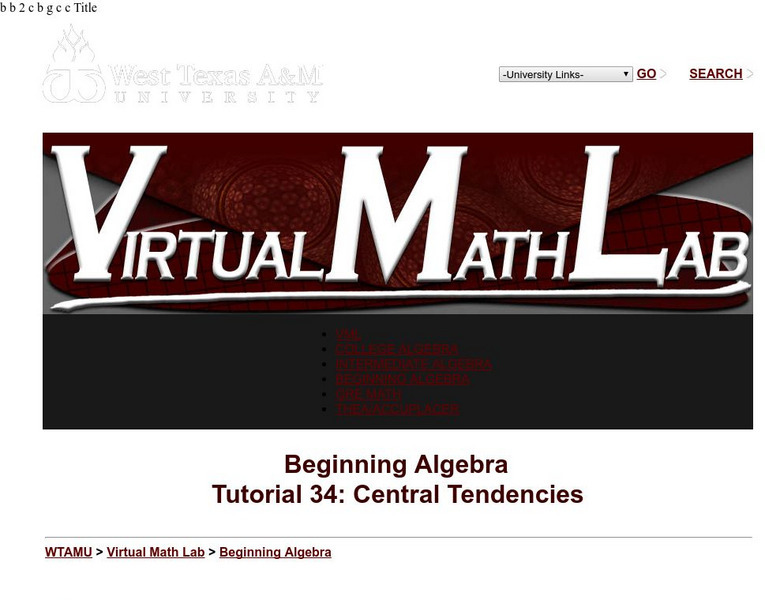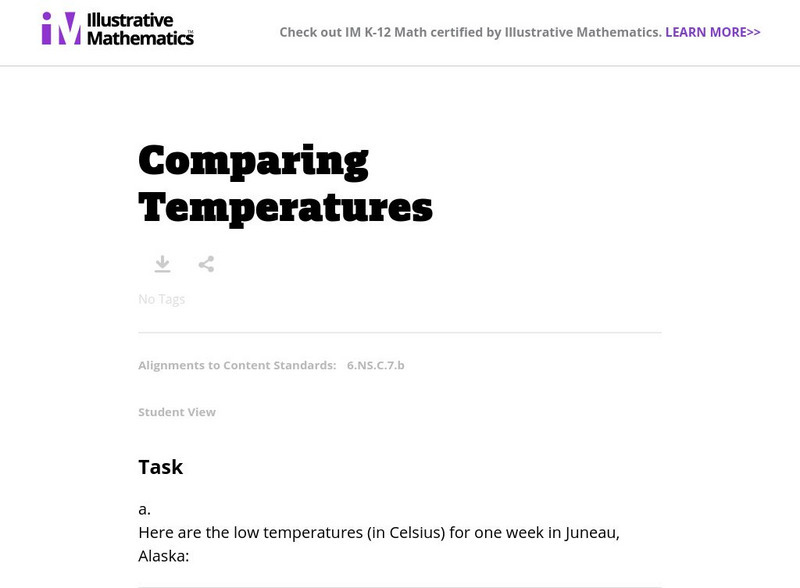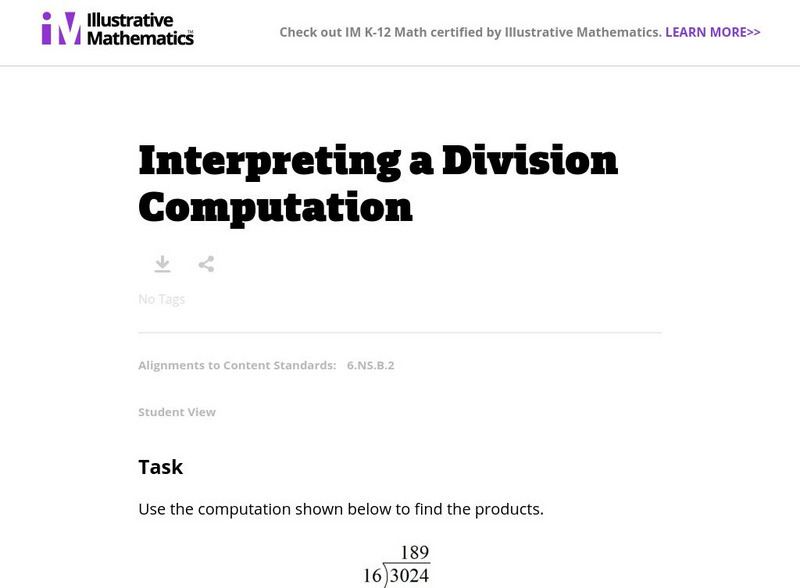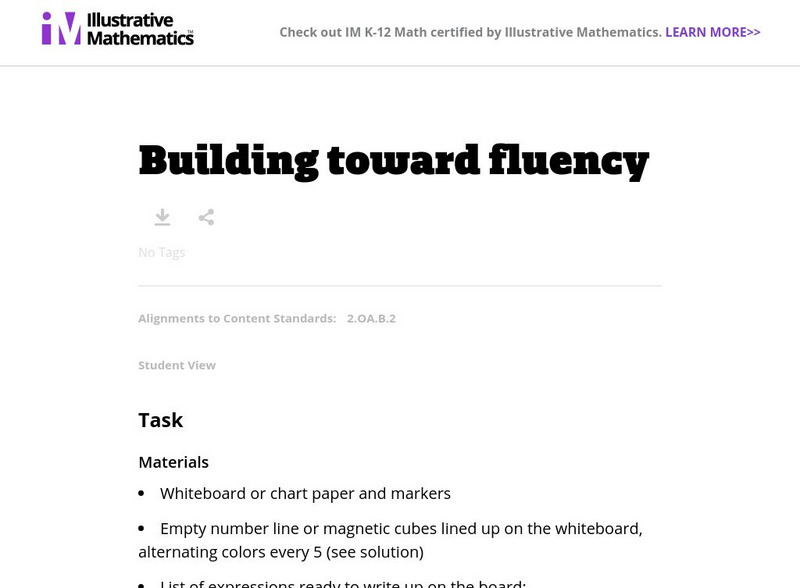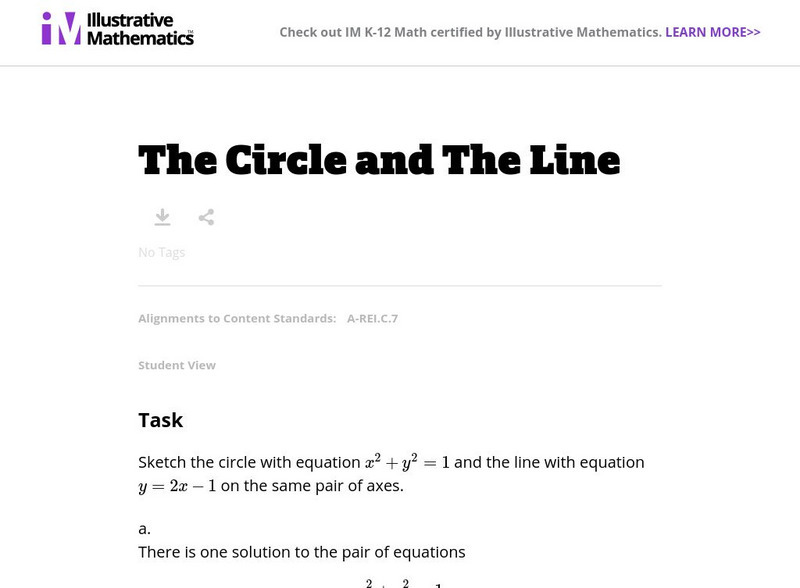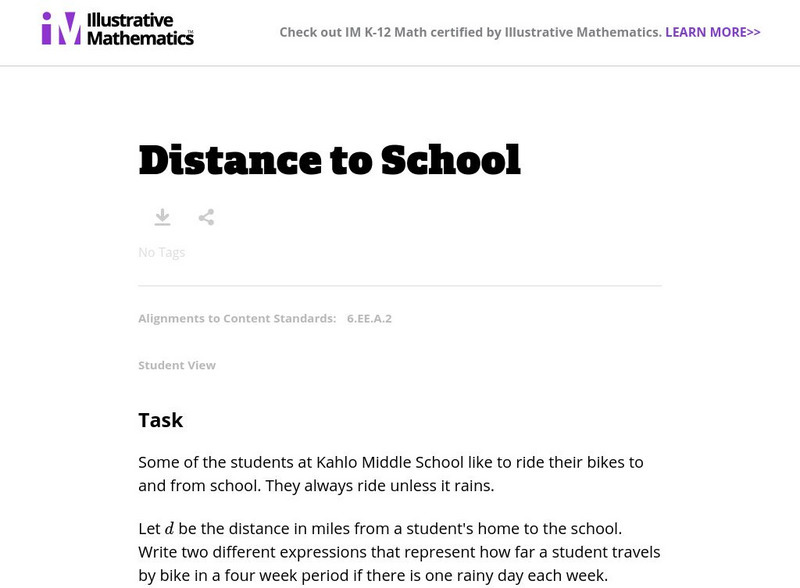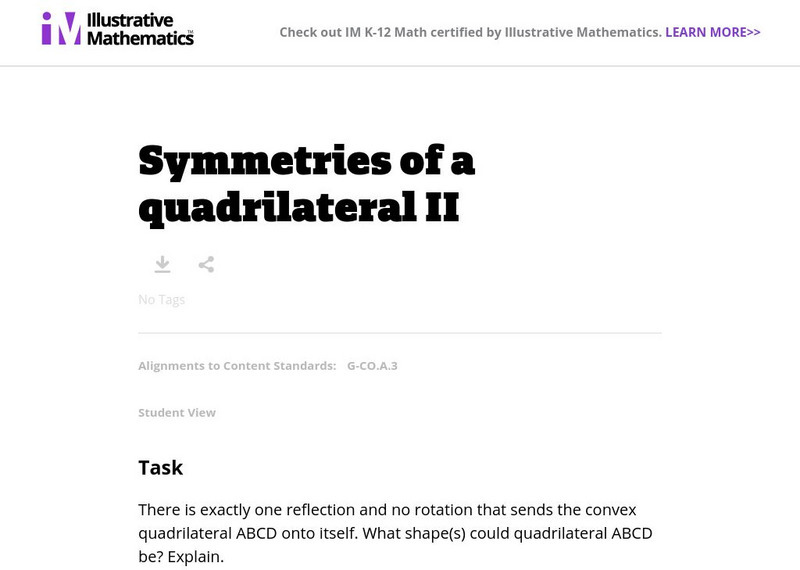Texas A&M University
Wtamu Virtual Math Lab: Beginning Agebra: Central Tendencies
A tutorial to understand the three central tendencies and how to find them, as well as the standard deviation of values. Offers a discussion and practice problems.
Better Lesson
Better Lesson: More Dimes and Dollars
Second graders need practice using coins and dollars and relating them to ones, tens and hundreds. Common Core standards include counting by 10s and 100s.
Better Lesson
Better Lesson: Patterns Make Ten
This lesson builds a foundation for adding larger numbers which is supported by the Common Core standards for second grade.
Illustrative Mathematics
Illustrative Mathematics: 6.ns Comparing Temperatures
This task has students do computations with positive and negative numbers in the context of temperature. Aligns with 6.NS.C.7.b.
Illustrative Mathematics
Illustrative Mathematics: 6.ns Interpreting a Division Computation
Sixth graders are shown the arithmetic for a multi-digit division problem and are asked to use it to find the products of related multiplication questions. Aligns with 6.NS.B.2.
Illustrative Mathematics
Illustrative Mathematics: Building Toward Fluency
The purpose of this task is to promote certain addition strategies that will help students learn to fluently add and subtract within 20. Students will use a number line or magnetic cubes to solve addition problems. Students will be asked...
Illustrative Mathematics
Illustrative Mathematics: F Le Taxi!
In this task, students explore the linear relationship between distance traveled and taxi fare cost. Aligns with A-REI.D.10 and F-LE.B.5.
Illustrative Mathematics
Illustrative Mathematics: N Q Giving Raises
A small company wants to give raises to their 5 employees. They have $10,000 available to distribute. Imagine you are in charge of deciding how the raises should be determined. What method would be fair to everyone? Aligns with HSN-Q.A.2.
Illustrative Mathematics
Illustrative Mathematics: A Rei the Circle and the Line
Students are required to solve a system of equations in this task which will demonstrate their understanding of the correspondence between intersection points of the two graphs and solutions of the system. Aligns with A-REI.C.7.
Illustrative Mathematics
Illustrative Mathematics: 6.ee Distance to School
This task asks students to find equivalent expressions by visualizing a familiar activity involving distance. The given solution shows some possible equivalent expressions, but there are many variations possible. Aligns with 6.EE.A.2.
Illustrative Mathematics
Illustrative Mathematics: 6.sp Buttons: Statistical Questions
A task asking students to determine which of the six questions listed are statistical questions and which are not. Students are then asked to write a statistical question of their own.
Illustrative Mathematics
Illustrative Mathematics: Longer and Heavier? Shorter and Heavier?
Students will compare the length and weight of several pairs of objects to learn that weight and length are separate measurable attributes, and not always related.
Illustrative Mathematics
Illustrative Mathematics: Grandfather Tang's Story
The purpose of this task is for students to compose two-dimensional shapes to create a composite shape using tangram pieces. The teacher will read "Grandfather Tang's Story" and the students will use tangrams to compose the animals from...
Illustrative Mathematics
Illustrative Mathematics: G Srt Ask the Pilot
In the July 2013 issue of United Airlines' Hemisphere Magazine, a pilot responded to a question about how far in the distance he could see at different altitudes. The solution involved right triangles, lines of tangency to a circle, and...
Illustrative Mathematics
Illustrative Mathematics: 6.ns Fractions on the Number Line
In this task, 6th graders locate positive and negative fractions on a number line, determine if some inequalities are true, and compare fractions for their closeness to zero. Aligns with 6.NS.C.7.a.
Illustrative Mathematics
Illustrative Mathematics: G Co Symmetries of a Quadrilateral Ii
There is exactly one reflection and no rotation that sends the convex quadrilateral ABCD onto itself. What shape(s) could quadrilateral ABCD be? Explain. Aligns with G-CO.A.3.
